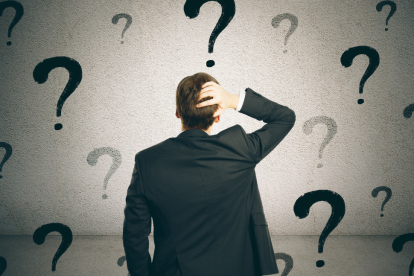
Mood Disorders
Mood disorders are mental health conditions that affect a person’s emotional state or mood, thus are alternately referred to as mood affective disorders. The primary feature of a mood disorder is that a person’s mood swings from “normal” to either a depressed state or a manic state, sometimes accompanied by anxiety. If not carefully managed with medicines, therapy and good self-care, the mood shifts associated with these disorders can become more frequent and intense, disrupting an individual’s daily functioning and quality of life.
What is a Mood Disorder?
Different types of mood disorders include major depressive disorder (also known as major depression, MDD or clinical depression), disruptive mood dysregulation disorder, persistent depressive disorder (also known as dysthymia), premenstrual dysphoric disorder, and unspecified depressive disorder. Depressive mood states can also be caused by the use of certain medications or recreational drugs (substance/medication-induced depressive disorder), as well as by some medical conditions.
Even though bipolar disorder (also known as manic depression) is in its own separate mental health category, people with bipolar I, bipolar II, rapid cycling bipolar or cyclothymic disorder can cycle through episodes of depression, mania and hypomania — often experiencing these symptoms simultaneously — so they are sometimes treated for a mood disorder “with mixed features.” As with depression, mania and other symptoms of bipolar disorder can also be triggered by substance use or prescription medications, as well as by some medical conditions.
People with mood disorders may experience mood changes differently and for differing durations, but a shared or common feature among those with mood disorders and bipolar disorders is that all may experience feelings of sadness, emptiness, heightened irritability, and cognitive changes that can significantly affect their capacity to function.
Facts and Statistics
- As many as one in 10 adults in the U.S. suffer from mood disorders
- Nearly six million adults aged 18 or older have bipolar disorder
- More than 16 million U.S. adults aged 18 or older have had at least one major depressive episode in the past year
- In 2015, more than 2 million U.S. adolescents aged 12 to 17 had at least one major depressive episode in the past year with severe impairment
- Women are 50% more likely than men to experience depression in their lifetime, but bipolar disorder affects both genders and occurs in all races, ethnic groups and social classes
- Mood disorders appear to be more prevalent among Caucasians — non-Hispanic blacks are 40% less likely, and Hispanics are 20% less likely than non-Hispanic Caucasians to experience a mood disorder during their lifetime
- The average age of onset for bipolar disorder or a mood disorder is 25-30 years old
- Mood disorders may be genetic — more than 66% of people with bipolar disorder have at least one close relative with either bipolar, major depression or another mood disorder
- Research shows there is a high comorbidity of mood disorders and substance abuse — people diagnosed with mood disorders are twice as likely to also have a substance use disorder
Symptoms and Diagnosis of a Mood Disorder
The first symptom of a mood disorder is typically a lengthy or prolonged disturbance in mood and energy, manifesting either as depression or mania that is sometimes accompanied by other signs and symptoms. The affected individual may drink alcohol or take drugs or medications in an attempt to regulate or “self-medicate” their mood state and feel better. Unfortunately, alcohol and other substances can actually cause the symptoms to worsen and any attempts to self-medicate may delay and complicate proper diagnosis and treatment of the underlying mood disorder.
A person experiencing depression may experience signs and symptoms that include:
- Sadness
- Loss of enjoyment/pleasure in favorite activities
- Physical complaints (aches and pains, digestive problems)
- Decrease in sex drive
- Change in appetite
- Fatigue, low energy and change in sleep patterns
- Trouble concentrating
- Lowered self-esteem
- Suicidal ideation or preoccupation with death and dying
A person experiencing mania or hypomania may experience signs and symptoms that include:
- Elation or euphoria and increased energy
- Racing thoughts and rapid speech
- Decreased need for sleep
- Impulsivity with increased spending and other impulsive or risk-taking behaviors
- Increase in self-confidence
- Increased sex drive
The signs and symptoms of mania are more typically seen in people with bipolar disorder, while the symptoms of depression can be seen in people with bipolar or a mood disorder.
Diagnosis
According to the Diagnostic and Statistical Manual of Mental Disorders (DSM-5), a reference manual used by psychiatrists to diagnose and classify mental illnesses, depression and bipolar disorder are the two most common types of mood disorders, although they are categorized separately in the manual.
When diagnosing depression or bipolar, the mental health professional will assess the person’s mood, behaviors, and medical history. Per the DSM-5, a person is diagnosed with depression if they exhibit five or more of the listed symptoms for at least two consecutive weeks, with one of the symptoms being sadness or loss of pleasure. When diagnosing bipolar disorder, the mental health professional will refer to the DSM-5 list of diagnostic criteria to identify one of three types of bipolar disorder, depending on an individual’s symptoms over a period of two or more weeks in the past 12 months. The pattern of symptoms experienced in that timeframe may indicate bipolar I, which involves at least one manic or mixed episode of mania and depression; bipolar II, which involves a state of hypomania (less severe than a full manic episode) with alternating states of depression; or cyclothymia, which involves cycles of mild depression and hypomania.
Both depression and mania can affect daily functioning, so patients exhibiting these symptoms will benefit from a treatment program that involves a combination of psychotherapy and medication.
Causes and Risk Factors
Research indicates that mood disorders are most likely caused by a combination of genetic, biological, environmental, and psychological factors. Most experts agree that, biologically speaking, mood disorders result from a chemical imbalance in the brain. These disorders tend to run in families, so those who have family members with depression or bipolar disorder are at higher risk for developing one of these conditions, though the symptoms and age of onset can vary somewhat from individual to individual.
In addition to genetics as a risk factor, mood disorders can sometimes be triggered by major life stressors and traumatic events, or by substance abuse. Health problems and physical illness or injury can also be risk factors for depression and other mood disorders. Isolation is also considered a risk factor for both mood disorders and substance abuse disorders — people experiencing difficult mood changes and emotions may be inclined to isolate and try to self-treat their symptoms, which may only exacerbate them.
Co-Occurring Disorders or Complications
Sometimes an individual will be diagnosed with co-occurring disorders, substance use disorder and a mood disorder. It can be challenging for a mental health professional to accurately diagnose the specific underlying mood disorder in a person with substance use disorder until the individual has undergone treatment and the effects of the abused substance have diminished.
Dual diagnosis. Sometimes an individual has been self-medicating an undiagnosed mood disorder to alleviate their mood changes and mental health symptoms. Alternately, their use of substances has caused a mood disorder to manifest. In cases where both disorders appear to be present, the mental health professional will typically recommend treating both disorders simultaneously. With dual diagnosis, integrated treatment in a residential setting helps manage symptoms of both disorders and enables the care team to make a more precise diagnosis of the underlying mood disorder as addictive behavior patterns change over time. As symptoms of substance use disorder diminish, the care team can more readily isolate and identify the mental health symptoms.
Mood Disorder Treatment and Prognosis
Mood disorders can be managed effectively and usually involve psychotherapy or mental health counseling, cognitive behavioral therapy (CBT), medication and lifestyle changes that ensure good support and improved self-care.
Medication. An important component of treatment for mood disorders is usually to prescribe mood-stabilizing drugs to alleviate or moderate symptoms. The medications used for mood disorders include antipsychotics, antidepressants, anticonvulsants, and benzodiazepines, among others. The medication may need to be adjusted over time as the mental health professional works with the individual to manage side effects and arrive at the safest, most effective type of medication and dose. In some cases, natural supplements may be used to improve and stabilize mood. Natural supplements that may be prescribed as part of a treatment plan include St. John’s Wort, Omega-3 fatty acids, and S-adenosylmethionine. These supplements can be particularly helpful for patients who experience negative side effects from other prescription medications.
In more severe cases where symptoms are particularly dangerous, electrical brain stimulation may also be used. The updated form of electrical brain stimulation or electroconvulsive therapy (ECT) is much safer and more effective than in the past, and involves using low levels of electrical stimulation of the brain to help patients get relief from major depression or suicidal thoughts.
Therapy. The goal of therapy for a mood disorder is to help a person accept or come to grips with their diagnosis of a mental health condition. The therapist will emphasize the importance of medication to help balance and restore proper brain chemistry. The therapist may utilize cognitive behavioral therapy to help the individual self-identify negative changes in mood, thinking and behavior, recommending positive actions to take to improve these. A therapist can also provide tools and methods for alleviating daily stress that may trigger mood shifts. While both inpatient and outpatient treatment programs are available, a residential program for initial treatment is often best to ensure comprehensive care, a precise diagnosis, and the development of an individualized treatment approach targeted to the person’s age, condition, severity of disorder, lifestyle and circumstances, and personal preferences.
Alternative health practices are often helpful in regulating moods and easing the symptoms of mood disorders. A long-term treatment plan may include alternative modalities such as meditation and deep-breathing exercises, acupuncture, yoga and qi-gong. People with mood disorders who continue to engage in these activities find that over time they are less likely to suffer severe mood changes.
A treatment plan that includes healthy stress relievers and mood-regulating activities is particularly helpful for people who have high-pressure careers or demanding lifestyles — physicians and other health care professionals, and corporate executives, among others — that make them more vulnerable to stress, depression, and relapse.
Outlook for Mood Disorders
Mood disorders are quite treatable. A mental health professional can help develop an individualized treatment plan with the right combination of prescription drugs or supplements and psychotherapy to help manage and control mood disorder symptoms.
Early treatment is best and, in most cases, an initial stay in a residential program is the best route to stabilizing moods and other symptoms and establishing a tailored treatment plan that will be effective moving forward. A person’s mood disorder type and severity will impact both treatment and prognosis for recovery, but with ongoing mental health treatment, abstinence from substance use and other positive lifestyle changes that support mood management and prevent relapse, it is possible to experience well-being and enjoy a high quality of life.






